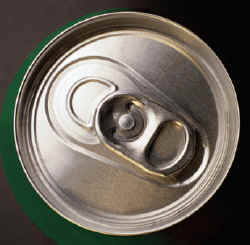Warming Up to Superconductivity

Many metals dramatically lose all electrical resistance when they are chilled to low temperatures. But the 1 November PRL describes a case where superconductivity can arise from heating the sample, if it starts out cold enough. The researchers also found another surprising property: The superconducting transition temperature and magnetic field are not constant but depend on the sample’s history–like ice that melts at one temperature on warming and then freezes at a different temperature on cooling. These strange properties were observed in thin films of aluminum, a metal whose superconductivity was thought to be well understood. The researchers hope that a complete explanation of their data will lead to new insights into superconductivity.
A cold, superconducting sample will be driven into the normal state if it is warmed above the transition temperature; but it will also become normal without changing temperature if a strong magnetic field is applied. So the state of a superconductor is determined by both temperature and magnetic field.
When Philip Adams of Louisiana State University in Baton Rouge and his colleagues looked at these properties in thin films of aluminum, they found some surprises. Although many researchers have been scrutinizing such films with the magnetic field perpendicular to the plane of the film, several years ago the team decided to try the field parallel to the film, “to see what would happen,” recalls Adams.
Their latest data show that the so-called critical field–the field strength needed to destroy the superconductivity–was 5.9 T at a temperature of 30 mK; but to reestablish the superconductivity, they needed to lower the field below about 5.6 T. At a fixed magnetic field, the team saw similar “hysteresis” effects when changing the temperature. This hysteresis is so large and stable that Adams and his colleagues call it “state memory” because the sample seems to “remember” where it has been. The team’s strangest result is that in a field of 5.65 T , warming the normal sample from 30 mK causes it to become superconducting at about 100 mK and then normal again at about 500 mK.
Hysteresis is a classic sign of a system out of equilibrium and unable to get to its desired lowest energy state, similar to very pure, supercooled water, which won’t form ice without impurity particles on which to crystalize. But in the superconductor, “what’s keeping you from getting into the other phase?” Adams asks. He has no immediate answer–he only assumes that it’s related to the unusual way in which the magnetic field appears to destroy the superconductivity in this case. The classic mechanism involves superelectrons moving in large-scale currents in the plane perpendicular to the field, but in these 2-nm-thick films that’s not possible. Instead, the magnetic field kills the superconductivity by aligning electron spins.
Arthur Hebard of the University of Florida in Gainesville says the data are very convincing, especially because the team used a direct measure of the state of the electrons (tunneling conductance), rather than relying on the technically simpler method of measuring electrical resistance. He says the results “should stimulate some discussion and thought from everybody.”


